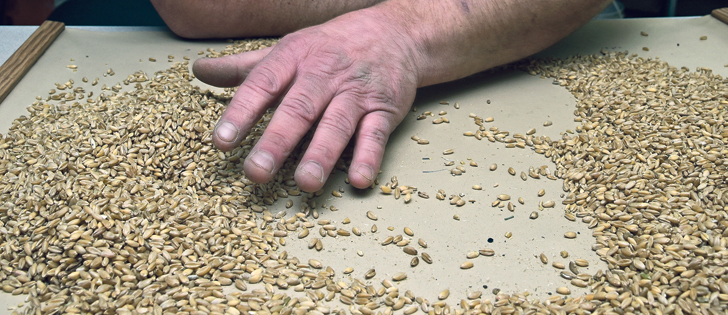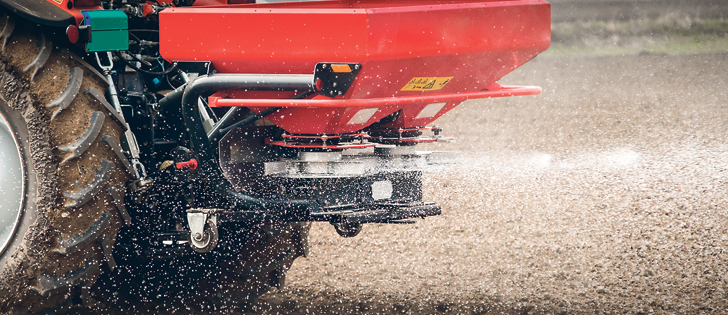Central Alberta farmer Steve Larocque has tried to walk through 200 bushel per acre barley fields.
“You could walk across the top more easily,” he said about the experience.
Larocque first encountered the world down under during his Nuffield scholarship experiences and continues to be fascinated with the potential from spring crops that is exploited in New Zealand and elsewhere.
He told a packed room of farmers attending CropSphere during Crop Week in Saskatoon that his experience around that barley led him on a quest to improve what is being done at home.
Read Also

Growing garlic by the thousands in Manitoba
Grower holds a planting party day every fall as a crowd gathers to help put 28,000 plants, and sometimes more, into theground
After securing funding from the Alberta Barley Commission and the Alberta Crop Industry Development Fund, he and a group of agronomists, co-operating farmers and advisers started experimenting with some very lofty goals.
The Barley 180 project was aimed at bringing prairie yields more in line with New Zealand and European crop production.
“One-hundred-and-eighty might have been a bit of reach, but it had been done,” the farmer and consultant told producers.
Westco grew 188 bu. plots at Beiseker, Alta., in 1990 on 295 millimetres of rain.
That research showed that after throwing everything they could at the crop, 73 percent of the yield gains were made from improved nitrogen fertility programming.
However, it didn’t happen in isolation. The Virden six-row barley was seeded at 96 pounds per acre, the seed was treated and it got 216-0-0-21 as a pre-plant application, a fertility package that included boron, copper, iron, zinc and manganese and an additional shot of 0-54-54-0 with half in the side band. It was also treated with Tilt.
“The problem, as we all know, is that when you push the N at the barley, it falls down,” said Larocque, who also runs a farm business called Beyond Agronomy.
In 1989, researchers grew 190 bu. of Harrington barley at Vauxhall, Alta., but that was under irrigation. Banded fertilizer and a complete fertility package was put into the ground. That time a plant growth regulator was used to keep the crop upright. Two passes of Tilt kept it from disease losses.
By 2011, Larocque and his colleagues had garnered $110 per acre to add to their standard barley recipes.
Gains were modest, but indicated that there was potential to grow yields with improved investments in the crop.
“We all threw the kitchen sink at it,” he said.
With co-operating farmers at Airdrie, Olds, Crossfield, Carbon, Morrin and Three Hills, the risk and experience was spread around geographically.
Barley in the program saw in-creases of about 20 bu. per acre with Metcalfe, Champion and Xena varieties.
A year later, the trials were hit with drought and hail, heavily skewing the results.
In 2013, too much rain fell. Again, 20 bu. increases were common in both older and newer varieties.
To reach 180 bu. per acre, the producers needed to yield 3.93 tones per acre in yield.
In 2011, despite putting 170 pounds of nitrogen on the crop, protein stayed in the low 10 percent area. The numbers of kernels per head moved from 20 or 22 to 26.
AC Champion was one of the winning varieties when it came to yield and standability, but PGRs were key to keeping the height of the crop under control.
Larocque found that 140 bu. yields were more likely to be achieved, and that instead of targeting 180 bu. with the inputs necessary to achieve that goal, a prairie reality might be 40 bu. less and put more margin in growers’ pockets.
In addition, the research found that it is likely that on 12 inch seed row spacing, seeding rates can get too high, resulting in lower yields.
“The sweet spot is 25 to 30 plants per sq. foot,” he said.
“You would have trouble getting 31 seeds per foot without clumping with an air seeder. That is more singulated planters or a narrowing row spacing to get that right.”
Returns on investment varied through the 2014 research, but $30 per acre as common, depending on the field and the year.
In New Zealand, control of disease is a large issue for growers, as well the use of PGRs. PGRs also reduce the distance between the head and the flag leaf. Neck break tends to occur at the flag leaf on the plant, so anything that shortens that distance reduces the potential of heads laying on the ground.
In Canada, the fungicide ProLine is commonly applied in canola, but in New Zealand it is applied to barley for blotch and scald control.
Staging of applications of fertilizer was found to not have a positive effect.
“You aren’t looking to apply N to increase protein later on the crop, and yield is set so early in barley you need all that fertilizer there with the crop 12 days after emergence,” he said.
It also means fertilizer products that slow release are not helpful in barley production. The Alberta research found that banding the fertilizer ahead or during seeding would allow the plants to make yield decisions at the right point.
“It’s not wheat. It flowers differently, it does many things differently than other cereals, and growers need to think about all of those things,” he said.
At 140 bu. per acre, malting barley prices make the crop very attractive, but at $3 per bu., feed isn’t out of the question for many regions of the Prairies.
Larocque said no one part of a barley strategy can be relied upon to carry a big crop.
“It’s synergistic,” he said.
“You need to do it all.”

















